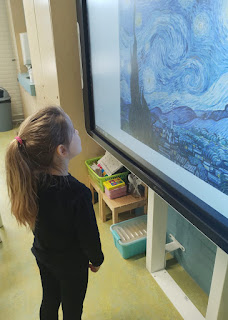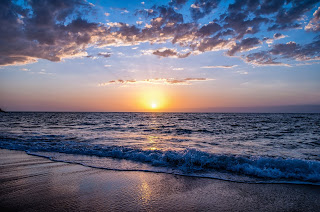You need:
- dark blue construction paper
- black construction paper
- leftovers of construction paper in several colors
- scissors
- glue
In this lesson students cut a performance out of paper just like Matisse did with his work: The fall of Icarus.
Matisse (1969-1954) was a French sculptor and painter. He is seen as the founder of fauvism. In his last years of life Matisse wasn't able to paint anymore. A pair of scissors was the tool he used to transform painted papers (painted by assistants) into a world of plants, animals, shapes and figures.
One of these cut-outs is the artwork Icarus (1947).
Read the myth of Daedalus and Icarus.
Then look at the
original artwerk Icarus.
What do you see? At what time of day were Daedalus and Icarus flying and how can you see that? (at night - dark blue paper, stars). What do you notice about the body of Icarus? (limbs have different thicknesses) What can you deduce from that? (no drawing in advance but cut out of the hand) What could be the red dot? (heart) How do you know Icarus is falling? (arms spread, head not straight on the body) Can you see that Icarus is falling into the see? (no) What else could he fall in?
Task
The real Icarus fell into the sea, but our Icarus falls into something else ... and you decide for yourself into what! Trees? A city? On a church?
Cut a falling human out of black construction paper. You're not allowed to make a drawing in advance, just cut 'out of the hand'. If the first time fails, you take a new black sheet. Cut some stars. Cut a surface: in what is Icarus falling? Place the loose parts on a blue sheet and stick all of them.
All artworks made by students of grade 3.












































